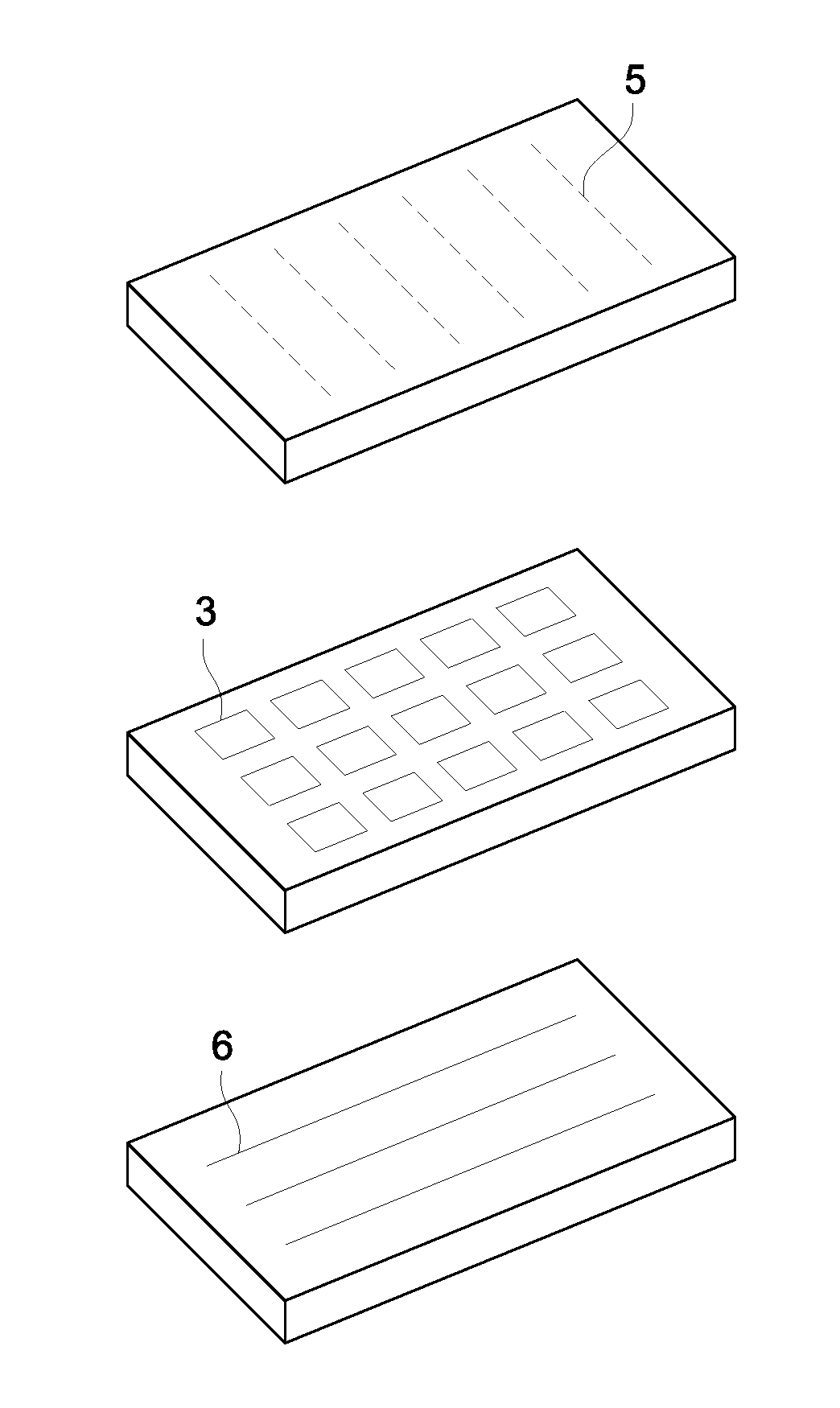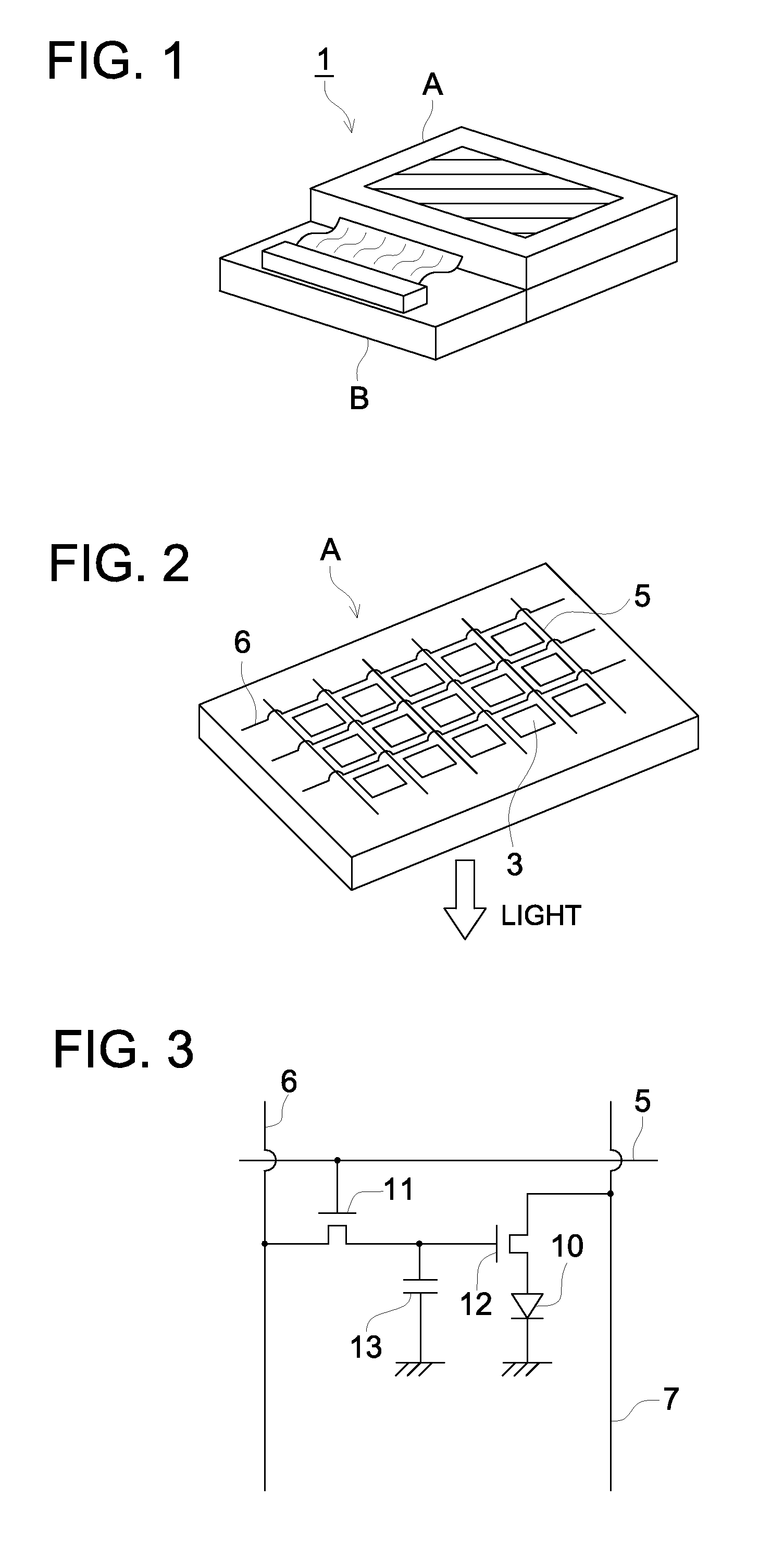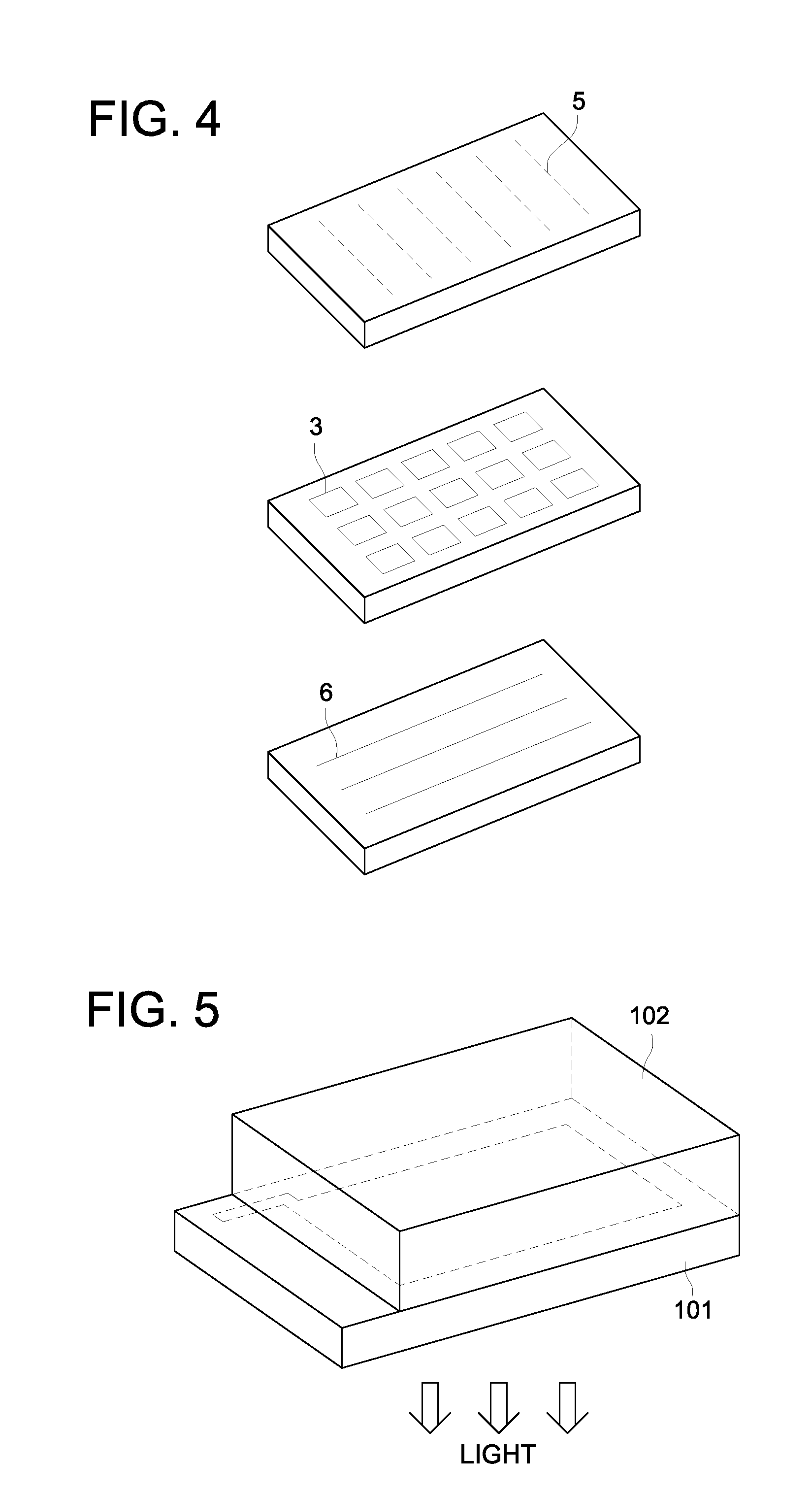Organic electroluminescent element and lighting device using same
a technology of electroluminescent elements and lighting devices, applied in the direction of basic electric elements, electrical equipment, semiconductor devices, etc., can solve the problems of ink-jet methods that are difficult to say that they are effective, unproductive on the contrary, and vacuum processes, etc., to reduce luminescence unevenness and thickness fluctuations, suppress luminescence deterioration, and high production efficiency
- Summary
- Abstract
- Description
- Claims
- Application Information
AI Technical Summary
Benefits of technology
Problems solved by technology
Method used
Image
Examples
example 1
[0378]An acrylic clear hard coat was formed on a PEN film (30 cm×30 cm, produced by TEIJIN Co., Ld.) with a slot coater, then it was cured by UV irradiation.
[0379]Further, an ITO film of 100 nm was formed on the clear hard coat with a sputter method, then pattering was performed with a resist method. The obtained ITO film has a surface resistivity of 25 Ω / cm2 and a surface roughness of 1 nm or less.
[0380]A film of PEDPT 4083 (produced by Stark Co. Ltd.) having a thickness of 30 nm was formed with a slit coating method on the ITO film. Then, it was heated to dry at 150° C. for 30 minutes.
[0381]Hereafter, an organic EL element was prepared on the obtained film of ITO / PEDOT. The organic EL element was prepared in a glove-box which was controlled water and oxygen content to be 1 ppm or less.
[0382]On the PEDOT film was formed a film using a chlorobenzene solution of Poly-N,N′-bis(4-butylphenyl)-N,N′-bis(phenyl)benzidine (ADS-254, produced by American Dye Source, Co., Ltd.) with a slit co...
example 2-1
[0426]An EL element having a charge generating layer composed of n and p bilayer was subjected to evaluation.
[0427]An anode was prepared by making patterning to a glass substrate of 100 mm×100 mm×1.1 mm (NA45 produced by NH Techno Glass Corp.) on which a 100 nm film of ITO (indium tin oxide) was formed. Thereafter, the above transparent support substrate provided with the ITO transparent electrode was subjected to ultrasonic washing with isopropyl alcohol, followed by drying with desiccated nitrogen gas, and was subjected to UV ozone washing for 5 minutes.
[0428]On this transparent support substrate thus prepared was applied a 70% solution of poly(3,4-ethylenedioxythiphene)-polystyrene sulfonate (PEDOT / PSS, Baytron P AI 4083 made by Bayer AG.) diluted with water by using a slit coating method to form a film and then the film was dried at 200° C. for one hour. A first hole transport layer having a thickness of 30 nm was prepared.
[0429]After the formation of the first hole transport la...
example 2-2
[0440]An organic EL element having a charge generating layer composed of n / p bilayer GCL was prepared and evaluated.
[0441]An anode was prepared by making patterning to a glass substrate of 100 mm×100 mm×1.1 mm (NA45 produced by NH Techno Glass Corp.) on which a 100 nm film of ITO (indium tin oxide) was formed. Thereafter, the above transparent support substrate provided with the ITO transparent electrode was subjected to ultrasonic washing with isopropyl alcohol, followed by drying with desiccated nitrogen gas, and was subjected to UV ozone washing for 5 minutes.
[0442]On this transparent support substrate thus prepared was applied a 70% solution of poly(3,4-ethylenedioxythiphene)-polystyrene sulfonate (PEDOT / PSS, Baytron P AI 4083 made by Bayer AG.) diluted with water by using a slit coating method to form a film and then the film was dried at 200° C. for one hour. A first hole transport layer having a thickness of 30 nm was prepared.
[0443]After the formation of the first hole trans...
PUM
 Login to View More
Login to View More Abstract
Description
Claims
Application Information
 Login to View More
Login to View More - R&D
- Intellectual Property
- Life Sciences
- Materials
- Tech Scout
- Unparalleled Data Quality
- Higher Quality Content
- 60% Fewer Hallucinations
Browse by: Latest US Patents, China's latest patents, Technical Efficacy Thesaurus, Application Domain, Technology Topic, Popular Technical Reports.
© 2025 PatSnap. All rights reserved.Legal|Privacy policy|Modern Slavery Act Transparency Statement|Sitemap|About US| Contact US: help@patsnap.com



